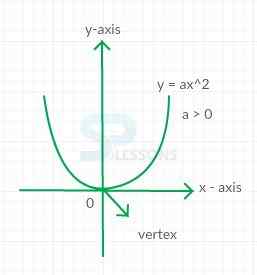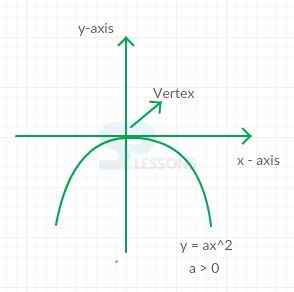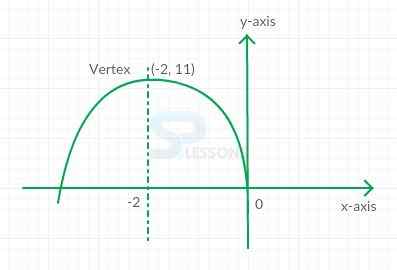 Introduction
Introduction
Function: A relationship between a set of inputs and a set of allowable outputs is defined as a function and each input is is related to a particular output. A function is also described as a relation between different variables. It is commonly expressed as an expression involving one or more variables.
The inputs to a function are variables such as [latex]x[/latex].
The output of the function can be represented as [latex]f(x)[/latex] or [latex]g(x)[/latex] for a particular value of [latex]x[/latex].
Output of the function is always equal to two times the value of [latex]x[/latex] ie.
[latex]f(x)[/latex] = [latex]x[/latex]
Eg: If [latex]x[/latex] = 1 then [latex]f(x)[/latex] = 2[latex]x[/latex].
Quadratic function: [latex]f(x)[/latex] = [latex]ax^2 + bx + c[/latex]
Where, [latex]a[/latex], [latex]b[/latex], and [latex]c[/latex] are constants and [latex]a[/latex] ≠ 0
This form of function [latex]f(x)[/latex] is known as a quadratic function. On the coordinate plane, if a quadratic equation is drawn then the result is a parabola. This can be either open upward or downward U-shaped curve.
Quantitative Aptitude -BANKING|SSC|RAILWAYS|INSURANCE|RECRUITMENT EXAMS - EBOOKS
 Methods
Methods
Estimation of functions:
Function estimation means calculating [latex]f(x)[/latex] at some particular value [latex]x[/latex].
Eg: [latex]f(x)[/latex] = [latex]x^2[/latex] - 1. Then find [latex]f(2)[/latex]?
Substitute [latex]x[/latex] = 2, then
[latex]f(2)[/latex] = [latex]2^2[/latex] - 1
[latex]f(2)[/latex] = 3
Operations on functions:
Functions can be added, subtracted, multiplied and divided like any other quantity. Some of the below listed key rules will make these operations simpler.
Rules:
For any two functions of [latex]f(x)[/latex] and [latex]g(x)[/latex]
Addition: [latex](f + g)(x)[/latex] = [latex]f(x)[/latex] + [latex]g(x)[/latex]
Subtraction: [latex](f - g)(x)[/latex] = [latex]f(x)[/latex] - [latex]g(x)[/latex]
Multiplication: [latex](f * g)(x)[/latex] = [latex]f(x)[/latex] * [latex]g(x)[/latex]
Division: [latex]\frac{f}{g}(x)[/latex] = [latex]\frac{f(x)}{g(x)}[/latex]; [latex]g(x)[/latex] ≠ 0
Compound function:
A function that performs on another function is known as a compound function.
It is represented as "[latex]f(g(x))[/latex]".
First evaluate internal function [latex]g(x)[/latex] then outer function [latex]f(x)[/latex]. It's double substitution.
Domain and range:
Domain of functions: The set of inputs([latex]x[/latex] values) for which the function is defined is defined as a domain of a function.
How to find domain of a function:
First look for any restrictions on the domain, to calculate the domain of the function. There are two main restrictions for function domain. They are:
- Division by zero: It is impossible mathematically. Eg: [latex]f(x)[/latex] = [latex]\frac{1}{x - 2}[/latex] is undefined at [latex]x[/latex] = 2, since when [latex]x[/latex] = 2, the function [latex]f(x)[/latex] = [latex]\frac{1}{0}[/latex]. Therefore, a function is therefore undefined for all the values of [latex]x[/latex] for which division by zero occurs.
- Negative numbers under square roots: The square roots of a negative number does not exist, so if a function contains a square root, such [latex]f(x)[/latex] = [latex]\sqrt{x}[/latex], the domain must be [latex]x[/latex] > 0.
- The easiest way to find range is to visualize it on a graph.
- [latex]x[/latex]-axis consists of all the values of [latex]x[/latex] of domain.
- [latex]y[/latex]-axis consists of all the values of [latex]f(x)[/latex] of range.
- It is similar to finding of domain.
- First, look for absolute values, even exponents or other reasons that the range would be restricted.
- Adjust the range step by step to find the domain.
Note:
The addition, subtraction, multiplication, division and other mathematical operations don't affect infinity.It is very important to see the absolute values and even roots. Once you can find a bound on a range that isn't infinity, need to know that the operations on the function will affect that range.
Quadratic function:
- The graphs of equations of the form [latex]y[/latex] = [latex]ax^2[/latex] are examples of parabola.
- These parabolas are symmetric about the [latex]y[/latex] axis; the open upward and have a lowest point at (0, 0) if [latex]a[/latex] > 0 in (figure A) and the open downward have a highest point at (0, 0) if a < 0 (figure B).
- The highest or lowest point of the graph of [latex]y[/latex] = [latex]ax^2[/latex] is called the vertex of the parabola and its line of symmetry is known as the axis of symmetry as simply the axis of the parabola.
 Samples
Samples
1. Find the vertex and axis of symmetry of the graph of [latex]f(x)[/latex] = -3[latex]x^2[/latex] - 12[latex]x[/latex] - 1 and sketch the graph.
Solution:
- Given
[latex]f(x)[/latex] = -3[latex]x^2[/latex] - 12[latex]x[/latex] - 1
Consider the vertex formula with [latex]a[/latex] = -3 and b = -12
[latex]h[/latex] = [latex]\frac{-b}{2a}[/latex]
= [latex]\frac{-12}{2(-3)}[/latex]
= -2
[latex]k[/latex] = [latex]f(h)[/latex] = [latex]f(-2)[/latex]
= -3[latex](-2)^2[/latex] - 12(-2) - 1
= 11
Therefore, the graph is as shown below:
It is a parabola, opening downward, with vertex as [latex]x[/latex] = -2.
- Given
[latex]f(x)[/latex] = [latex]-2x^2 - 5x + 3[/latex]
Here, [latex]a[/latex] = -2, [latex]b[/latex] = -5, and [latex]c[/latex] = 3
By vertex formula [latex]h[/latex] = [latex]\frac{-b}{2a}[/latex]
= [latex]\frac{-(-5)}{2(-2)}[/latex]
= [latex]\frac{-5}{4}[/latex]
[latex]k[/latex] = [latex]f(h)[/latex] = [latex]f(\frac{-5}{4})[/latex]
= -2[latex](\frac{-5}{4})^2[/latex] - 5[latex]\frac{-5}{4}[/latex] + 3
= [latex]\frac{49}{8}[/latex]
The [latex]y[/latex] intercept is [latex]c[/latex] = 3
The [latex]x[/latex] intercept are solutions of equation i.e.
-2[latex]x^2[/latex] - 5[latex]x[/latex] + 3 = 0
= ([latex]x[/latex] + 3)(-2[latex]x[/latex] + 1) = 0
[latex]x[/latex] = -3 and [latex]\frac{1}{2}[/latex]
As [latex]a[/latex] = -2 < 0, the graph opens downward as shown below.
- Given that,
[latex]f(x)[/latex] = [latex]\frac{3x}{4 - x}[/latex]
Now, substitute [latex](x + 1)[/latex] in the place of [latex]x[/latex] i.e.
[latex]f(x + 1)[/latex] = [latex]\frac{3(x + 1)}{4 - (x + 1)}[/latex]
[latex]f(x + 1)[/latex] = [latex]\frac{3x + 3}{4 - x - 1}[/latex]
[latex]f(x + 1)[/latex] = [latex]\frac{3x + 3}{3 - x}[/latex]
Therefore, the value of [latex]f(x + 1)[/latex] = [latex]\frac{3x + 3}{3 - x}[/latex]
- A. Given that,
[latex]f(x)[/latex] = [latex]x^2[/latex] - 3
Now, substitute 5 in the place of [latex]x[/latex] i.e.
[latex]f(5)[/latex] = [latex]5^2[/latex] - 3
[latex]f(5)[/latex] = 22
B. Given that,
[latex]f(x)[/latex] = [latex]x[/latex]
[latex]g(x)[/latex] = [latex]x^2[/latex]
Now, [latex]\frac{f}{g}(x)[/latex] = [latex]\frac{f(x)}{g(x)}[/latex] where [latex]g(x)[/latex] ≠ 0.
[latex]\frac{f}{g}(x)[/latex] = [latex]\frac{x}{x^2}[/latex]
[latex]\frac{f}{g}(x)[/latex] = [latex]\frac{1}{x}[/latex]
- A. Given that,
[latex]h(x)[/latex] = [latex]x^2 + 2x[/latex]
[latex]j(x)[/latex] = [latex]\mid\frac{x}{4} + 2\mid[/latex]
Initially consider [latex]h(x)[/latex] = [latex]x^2 + 2x[/latex]
Substitute 4 in the place of [latex]x[/latex] i.e.
[latex]h(4)[/latex] = [latex]4^2 + 2(4)[/latex]
[latex]h(4)[/latex] = 24
Now, [latex]j(h(x))[/latex] = [latex]j(24)[/latex]
So, substitute 24 in the place of x in [latex]j(x)[/latex] = [latex]\mid\frac{x}{4} + 2\mid[/latex]
[latex]j(24)[/latex] = [latex]\mid\frac{24}{4} + 2\mid[/latex]
[latex]j(24)[/latex] = [latex]\mid6 + 2\mid[/latex]
[latex]j(24)[/latex] = 8
Therefore, [latex]j(h(x))[/latex] = [latex]j(24)[/latex] = 8.
B. Given that,
[latex]f(x)[/latex] = [latex]3x + 1[/latex]
[latex]g(x)[/latex] = [latex]\sqrt{5x}[/latex]
Now, [latex]g(f(x))[/latex] = [latex]g(3x + 1)[/latex]
So, substitute [latex]3x + 1[/latex] in the place of [latex]x[/latex] in [latex]g(x)[/latex] = [latex]\sqrt{5x}[/latex] i.e.
[latex]g(f(x))[/latex] = [latex]\sqrt{5(3x + 1)}[/latex]
[latex]g(f(x))[/latex] = [latex]\sqrt{15x + 5}[/latex]
Therefore, [latex]g(f(x))[/latex] = [latex]\sqrt{15x + 5}[/latex].









